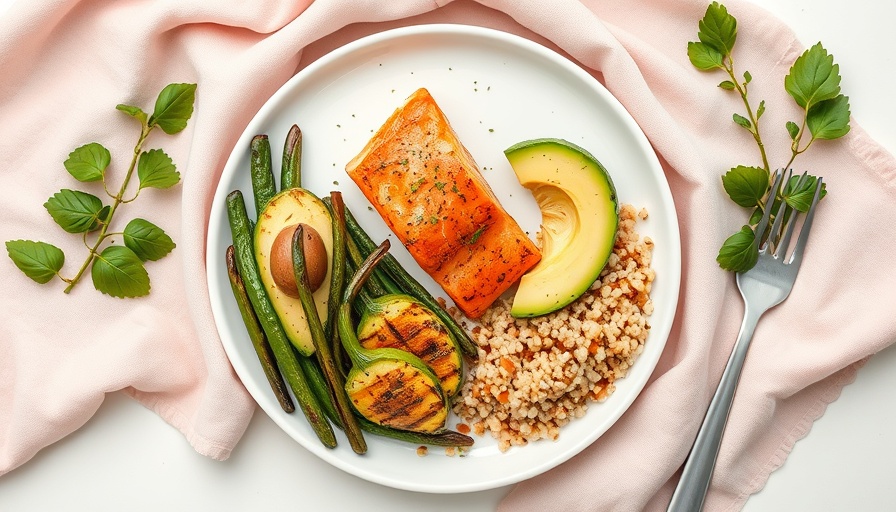
Understanding the Dynamics of Your Food Portions
Personalizing our meals based on what our bodies truly need is crucial for optimal health. Just like each person's story is unique, so too are our nutritional needs. By listening to our bodies and understanding why our food portions can fluctuate, we can nourish ourselves more effectively and feel more balanced and satisfied.
Why Food Portions Vary: Key Influences
Food portions are never static; they shift based on various internal and external factors. Recognizing these triggers can help you navigate your relationship with food more prudently.
Your Previous Meals Matter
The most immediate factor affecting our current hunger levels is what we’ve already eaten throughout the day. If you’ve had a balanced breakfast, lunch, and perhaps a light snack, you’ll likely notice an easier time gauging how much you truly need for dinner. Conversely, days marked by lighter meals can lead to increased hunger later on, potentially resulting in larger portion sizes and, yes, a surge in blood sugar levels that can leave us unsatisfied. Mindfully assessing what meals came before can guide how much we need to eat now.
Activity Levels: Fueling for Movement
Engaging in physical activities creates a higher energy demand. When you're active, your body requires more fuel, which could translate into larger portion sizes. Foods rich in carbohydrates and healthy fats, complemented with protein, supply the necessary energy for recuperation and muscle repair. However, on days of rest, it’s important to listen closely to hunger cues as your caloric needs decrease.
Environmental Triggers: The Setting Matters
The environment plays a significant role in how much we consume. Social settings often trigger mindless eating, whether it’s the size of the plate, the presence of celebratory food, or simply the allure of tempting aromas wafting by. Recognizing these external signals is essential for mindful eating. For instance, consider a vibrant party spread where the emphasis on grazing might lead to larger, unintended servings. Being aware of your surroundings can help you consciously navigate your choices.
Emotional Influences on Portion Sizes
Emotions wield a powerful influence over our appetite. Stress, sadness, or even happiness can prompt us towards a kitchen raid. For many, food isn’t just nourishment; it's also comfort. Understanding this emotional connection helps in cultivating a more mindful approach to eating. When feeling overwhelmed, rather than resorting to food, consider taking a walk or engaging in a favorite hobby. This can often refresh your mindset away from the kitchen.
Creating a Balanced Meal
Another fundamental component of regulating food portions is the composition of your meals. The Foundational Five model, which emphasizes a balance of protein, healthy fats, carbohydrates, and an abundance of fruits and vegetables, lays the groundwork for feeling satiated. When meals are rich in nutrient-dense foods, individuals tend to feel full longer, reducing the temptation for excessive portion sizes later in the day.
Mindful Eating Practices for Portion Control
Incorporating mindfulness into your meals can significantly enhance your understanding and regulation of portion sizes. Chewing slowly, focusing entirely on the meal, and appreciating the flavors can lead to greater satisfaction and help you discern when you’re full. Pairing food with gratitude or mindfulness practices can transform dining into a rewarding experience that goes beyond mere nutrition.
The Path Ahead: Future Insights on Food Portions
As we learn more about the science of eating and the psychology behind our food choices, a future of mindful eating appears promising. Older narratives of strict dieting and caloric restrictions are rapidly shifting towards a nuanced understanding of how different triggers affect our eating behaviors. Embracing this future can empower individuals to take charge of their eating habits with greater confidence.
Take Charge of Your Eating Journey
Becoming aware of the factors that influence your food choices is a powerful step towards a healthier lifestyle. Engaging in mindfulness around your meals not only fosters a deeper connection with food but also enhances your overall well-being. Remember to listen to your body, appreciate your meals, and note how various influences shape what and how much you choose to eat.
Are you ready to explore mindful eating techniques and redefine your relationship with food? Start by focusing on every bite, understanding what your body truly needs, and you may find a surprising sense of comfort and satisfaction in your food choices.
 Add Row
Add Row  Add
Add 



Write A Comment